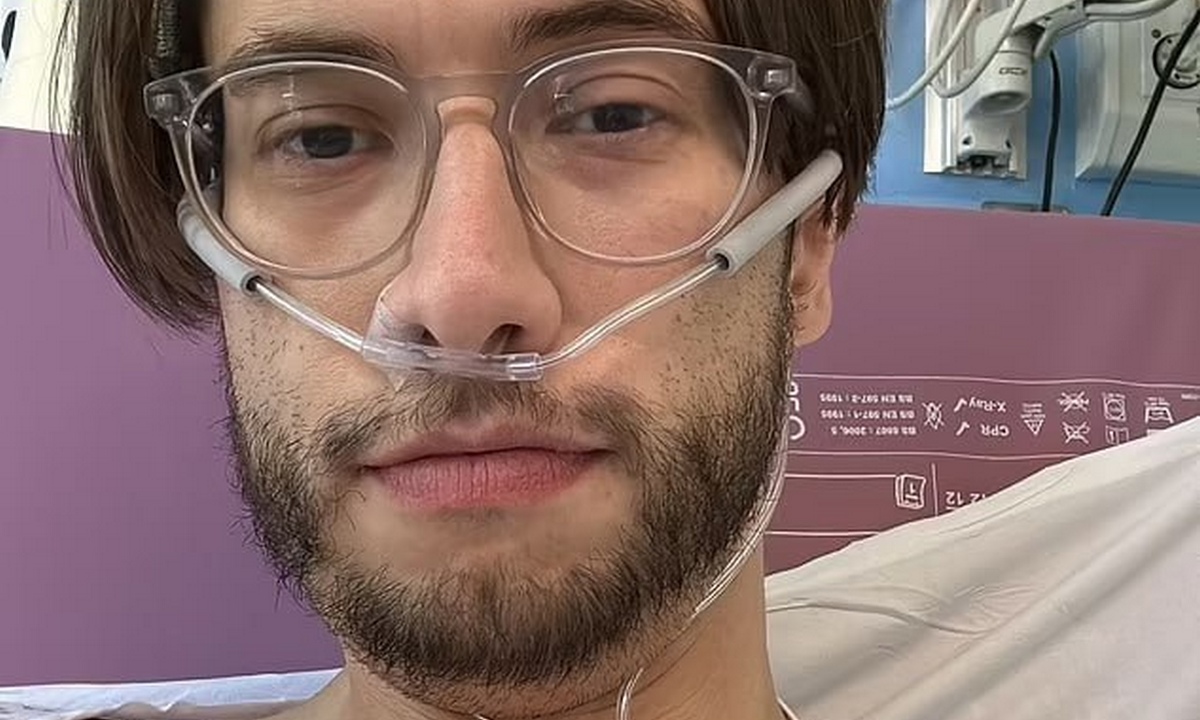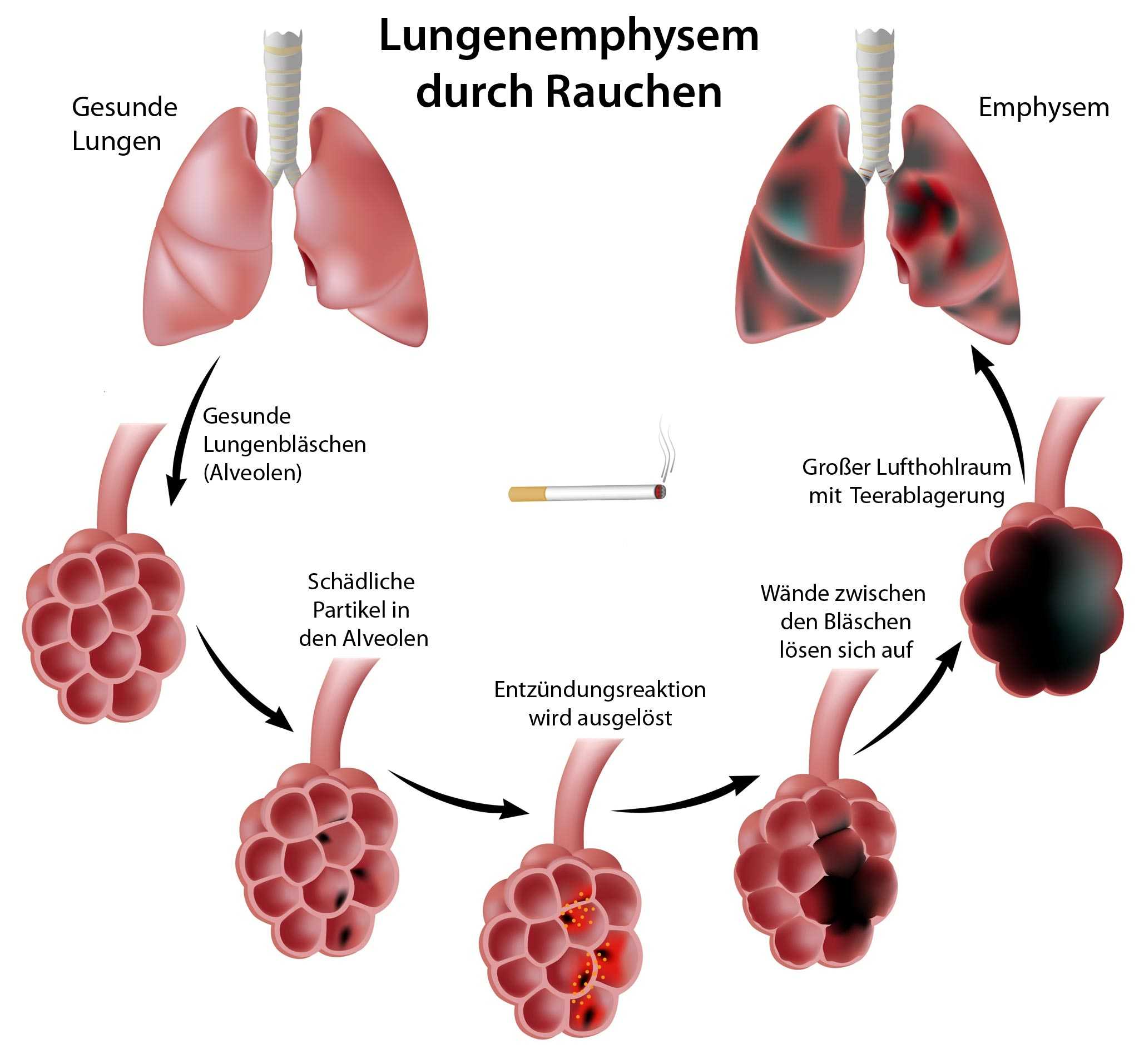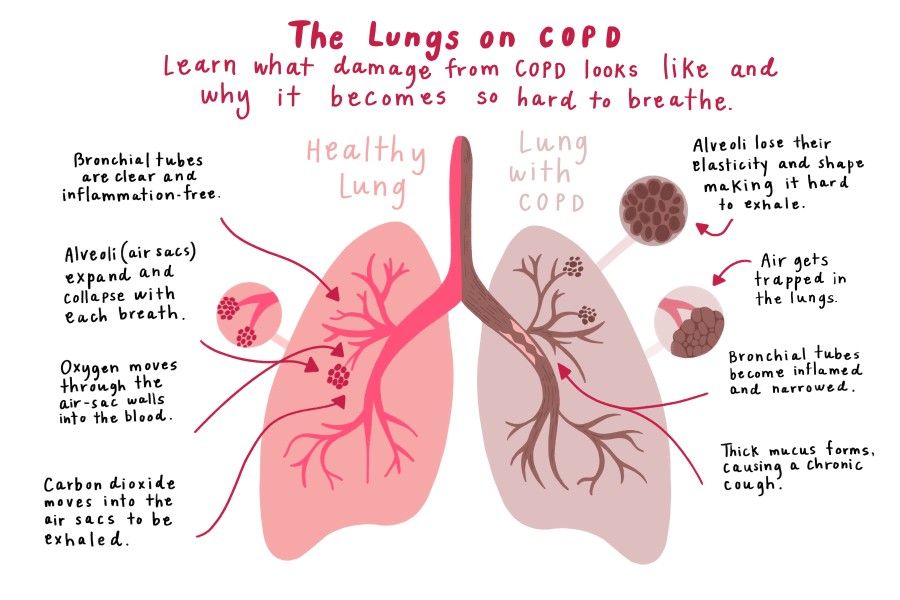What does it feel like to have a collapsed lung. What Does a Collapsed Lung Feel Like? Symptoms, Causes & Recovery
What does it feel like to have a collapsed lung? Symptoms of a punctured lung include sudden, sharp chest pain, shortness of breath, tightness in the chest, fatigue, and rapid heart rate. Learn about the causes and types of collapsed lung.
Understanding Collapsed Lung
A collapsed lung, also known as a pneumothorax, occurs when air collects in the space between the lung and the chest wall, causing the lung to collapse. This can happen due to a puncture or tear in the lung tissue, which allows air to escape into the pleural space. A collapsed lung can be a complete collapse or affect just a portion of the lung.
Symptoms of a Collapsed Lung
The primary symptoms of a collapsed lung are related to breathing difficulties. Individuals with a collapsed lung may experience:
- Sudden, sharp chest pain that worsens with deep breathing, coughing, or sudden movements
- Shortness of breath, including feeling winded during routine activities and difficulty taking deep breaths
- Tightness in the chest
- Fatigue and a rapid heart rate
- Bluish tinge to the skin, indicating a lack of oxygen
Types of Collapsed Lung
Collapsed lungs are categorized into three main types:

Traumatic Pneumothorax
This type of collapsed lung occurs due to direct trauma to the chest, such as from a car accident, gunshot, or certain medical procedures that deliberately induce a pneumothorax for medical purposes.
Primary Spontaneous Pneumothorax
This type of collapsed lung occurs without any apparent cause, often due to a small air sac on the outside of the lung rupturing and leaking air into the pleural space.
Secondary Spontaneous Pneumothorax
This type of collapsed lung is associated with an underlying lung disease, such as lung cancer, asthma, or chronic obstructive pulmonary disease (COPD). It has also been identified as a complication of COVID-19 in some cases.
Causes of Collapsed Lung
The primary causes of a collapsed lung include:
- Traumatic injury to the chest, such as from a car accident or gunshot wound
- Certain medical procedures that deliberately induce a pneumothorax for treatment
- Rupture of small air sacs on the lung surface (primary spontaneous pneumothorax)
- Underlying lung diseases, such as lung cancer, asthma, or COPD (secondary spontaneous pneumothorax)
- Damage to lung tissue, which can occur from smoking or cystic lung diseases
- Mechanical ventilation, which can create pressure imbalances in the lung and chest cavity
Risk Factors for Collapsed Lung
Certain factors can increase the risk of developing a collapsed lung, including:

- Smoking, which can damage lung tissue and increase the risk of primary and secondary spontaneous pneumothorax
- Underlying lung diseases, such as COPD, asthma, or lung cancer
- Cystic lung diseases, which can weaken the lung tissue
- The use of mechanical ventilation, which can create pressure imbalances in the lungs
- Traumatic injuries to the chest, such as from car accidents or sports-related incidents
Treating a Collapsed Lung
The treatment for a collapsed lung depends on the severity of the condition and the underlying cause. In mild cases, the healthcare provider may simply monitor the patient and allow the lung to re-expand on its own. In more severe cases, treatment may involve:
- Insertion of a chest tube to remove the air from the pleural space and allow the lung to re-expand
- Oxygen therapy to help the patient breathe more easily
- Surgery to repair the puncture or tear in the lung tissue
- Treating any underlying lung disease that may have contributed to the collapsed lung
Recovery from a Collapsed Lung
The recovery time for a collapsed lung can vary depending on the severity of the condition and the underlying cause. In general, patients with a collapsed lung can expect:

- A hospital stay of several days to a week or more, depending on the treatment required
- Gradual improvement in breathing and reduction of chest pain over the course of several weeks
- The need to avoid strenuous activities and certain movements that could re-injure the lung during the recovery period
- Ongoing monitoring and treatment of any underlying lung disease that contributed to the collapsed lung
If you experience sudden, unexplained chest pain or difficulty breathing, it’s important to seek medical attention immediately, as these could be signs of a collapsed lung or other serious medical condition.
What Does a Punctured Lung Feel Like?
Published on
in Articles
If you are feeling an intense amount of pain when you breathe, you may be suffering a punctured lung. This condition is also called pneumothorax, from pneumo, which means related to the lungs, and thorax, which refers to the chest. Some people may refer to it as a collapsed lung.
Air can collect in the space between your lungs and the wall of your chest. When this happens, that extra air can cause pressure to push back on the outside of your lung. As a result, the lung can collapse.
A punctured lung, or collapsed lung, can be a complete collapse, or it can affect just one portion of the lung.
Symptoms of a Punctured Lung
The symptoms of a punctured lung mainly affect your breathing. However, lack of oxygen can cause other issues within the body as well. If you are suffering from punctured lung symptoms, you may be experiencing the following:
- Sudden, sharp pain in the chest, which increases or worsens when you take a deep breath, cough, or otherwise make a sudden move requiring air
- Shortness of breath – you may have to remind yourself to take deep breaths, you may feel winded doing things that are otherwise easy for you, and you may have trouble doing things that require a lot of air, such as singing
- Tightness in the chest
- Fatigue – you may find yourself getting tired much more quickly than usual
- Rapid heart rate – if you have something with a heart rate tracker, such as a smartwatch, it can help alert you to a rapid heart rate.
 The average heart rate for adults ranges from 60 to 100 beats per minute.
The average heart rate for adults ranges from 60 to 100 beats per minute. - Bluish tinge to the skin – this symptom is a result of a lack of oxygen.
Types of Punctured Lung
A punctured lung is categorized in three major ways, and the categorization helps explain potential causes. These causes are not definitive, but they can be helpful for you to understand the nature of your condition.
Traumatic Pneumothorax
This form of punctured lung occurs during direct trauma to the chest. Trauma can be anything from a gunshot or a broken rib sustained during a car accident. This is the form of a punctured lung that might inspire you to seek medical help from professionals who specialize in trauma care, such as Pro-Care Car Accident Doctors. There are also certain medical procedures that require pneumothorax for successful medical support. This deliberate form of pneumothorax also qualifies as traumatic pneumothorax.
Primary Spontaneous Pneumothorax
This form of punctured lung is the most difficult to determine a cause for. It can happen without any apparent precedent, and there is no specific cause to point to. As the name suggests, it can happen spontaneously. The most common way by which this form of punctured lung occurs is when a small air sac on the outside of the lung raptures, causing a leak into the cavity around the lung, between your lung and chest wall.
It can happen without any apparent precedent, and there is no specific cause to point to. As the name suggests, it can happen spontaneously. The most common way by which this form of punctured lung occurs is when a small air sac on the outside of the lung raptures, causing a leak into the cavity around the lung, between your lung and chest wall.
Secondary Spontaneous Pneumothorax
Like the above-mentioned primary spontaneous pneumothorax, this form of punctured lung can seem to appear out of nowhere. However, this type of punctured lung usually occurs as a side effect of a pre-existing lung disease. Some diseases that can result in collapsed or punctured lung symptoms can include lung cancer, asthma, or chronic obstructive pulmonary disease, known as COPD. It has also been identified as a concerning complication of COVID-19, occurring in as many as one in one hundred COVID-19 patients.
Tension Pneumothorax
This is one of the rarest but most life-threatening forms of lung collapse. Positive pressure is defined as pressure that is greater than the pressure in the environment surrounding it. In the case of pneumothorax, air gets trapped in the pleural cavity. The pleural cavity is the space between the two pleurae, or sections, of a lung.
Positive pressure is defined as pressure that is greater than the pressure in the environment surrounding it. In the case of pneumothorax, air gets trapped in the pleural cavity. The pleural cavity is the space between the two pleurae, or sections, of a lung.
Other Causes
Damaged lung tissue is much more likely to collapse than healthy tissue. Damage to the lungs can happen as a result of the diseases mentioned above, as well as cystic lung diseases, in which round air sacs form within the tissue. Lung damage is also a common result of smoking. Smoking also damages the small air sacs (also known as alveoli) in your lungs, making them more prone to collapse. Smoking is also the main cause of lung cancer cases, which frequently results in secondary spontaneous pneumothorax.
Some people experience diseases that require them to use mechanical tools to aid in their breathing. As a result, mechanical ventilation, such as those used frequently with COVID-19 patients, especially at the beginning of the pandemic, can cause pneumothorax. This occurs because ventilators may create imbalances within the lung and chest cavity which lead to air pressure collapsing the lung.
This occurs because ventilators may create imbalances within the lung and chest cavity which lead to air pressure collapsing the lung.
Risk Factors
The chances of sustaining a punctured lung may increase depending on certain factors about who you are, what your lifestyle is like, and your health history. There may also be some effect that comes from your genetic heritage. The risk factors increasing the likelihood of experiencing pneumothorax depend on the form of pneumothorax.
You may recall that primary spontaneous pneumothorax is the form of a punctured lung that can occur for seemingly no reason. You may be likely to experience this form of punctured lung if you are a smoker. People who are otherwise healthy but have a tall, thin body type are also more at risk for this kind of collapsed lung. Pregnancy is another risk. Although it can be treated in pregnant women, the chance of punctured lung symptoms recurring is anywhere between thirty to forty percent, with an increased likelihood during labor.
Marfan syndrome is a connective tissue disorder passed down through families, which can affect your heart, eyes, blood vessels, and skeleton. Pneumothorax is a common issue for people with this diagnosis.
Epidemiology
Young adults ranging in age from twenty to thirty are the most common sufferers of primary spontaneous pneumothorax. Men are more likely to experience punctured lungs of this nature, with the incidence rate in the United States being 7 per 100,00 men versus 1 per 100,00 women. Recurrence of symptoms for this form of punctured lung usually occurs within the first year after it is first diagnosed, with that recurrence rate at its highest during the first thirty days after diagnosis.
Secondary spontaneous pneumothorax, on the other hand, is more common among older adults, especially in the sixty to sixty-five age range. Men are still more likely to experience this form of the disorder, with an incidence rate of 6.3 per 100,000 men in the United States, compared to 2 per 100,000 women. Smokers are at risk more than any other population, with a risk one hundred and two times higher than non-smokers.
Smokers are at risk more than any other population, with a risk one hundred and two times higher than non-smokers.
Traumatic pneumothorax, which is the form of punctured lung that occurs as a result of trauma to the chest area, occurs in one-fifth of victims of major trauma. The incidence rate for this form of punctured lung symptoms is 81 per 100,000 people of any gender, such that 20% of patients in a trauma care center may experience it.
Diagnosis
Pneumothorax is relatively easy for medical professionals to diagnose. Your doctor will most likely begin by using a stethoscope to listen to your breathing. If a punctured lung is the problem, then the doctor will hear breathing that is either greatly decreased or nonexistent. The doctor will then run a series of tests. The first among these tests will most likely be an x-ray of the chest to determine whether there is, in fact, air in the cavity between the lung or lungs and chest wall.
The doctor may also administer an arterial blood gas test, or ABG. This test measures the level of oxygen and carbon dioxide present in the blood. This test helps the doctor understand why you may have a hard time breathing. When your breathing is limited due to a punctured lung or a collapsed lung, there will be less oxygen and more carbon dioxide in your blood. This test is fairly quick, with results ready within fifteen or fewer minutes. Of course, this test alone is not enough to make a diagnosis, but it will give your doctor important information towards a complete and confident diagnosis.
This test measures the level of oxygen and carbon dioxide present in the blood. This test helps the doctor understand why you may have a hard time breathing. When your breathing is limited due to a punctured lung or a collapsed lung, there will be less oxygen and more carbon dioxide in your blood. This test is fairly quick, with results ready within fifteen or fewer minutes. Of course, this test alone is not enough to make a diagnosis, but it will give your doctor important information towards a complete and confident diagnosis.
In some cases, x-ray and arterial blood gas testing are not enough for your doctor to be completely sure that you are experiencing a punctured lung. In these cases, your doctor may order more detailed imaging, such as an ultrasound or a computerized tomography (CT) scan.
Treatment
The most important first step, and in fact the most important goal, is relieving any pressure on your lung. The pressure is what prevents your lung from fully expanding, thus causing the lack of oxygen reaching your blood. Your medical team may also administer treatment with the express purpose of reducing the likelihood of recurrence. Options for treatment are listed below.
Your medical team may also administer treatment with the express purpose of reducing the likelihood of recurrence. Options for treatment are listed below.
Observation
Small pneumothoraces sometimes repair themselves. In these cases, your doctor may choose observation as the best course of treatment. This will consist of x-ray monitoring and returns to your pulmonary specialist, who will look for signs of the excess air being reabsorbed. It may be several weeks before your lungs can fully expand on their own again.
Aspiration
This form of treatment is most common when there is a large portion of collapsed lung. This method uses either a needle or a chest tube to remove the excess air from the cavity surrounding your lung.
In the case of needle aspiration, your doctor will insert a hollow needle with a small tube, or catheter, in between the ribs. When it is in the cavity creating the pressure on your lungs, the needle is removed. A syringe is attached to the catheter so that the air can be pulled out. The doctor may leave the catheter in so that the lung can fully expand and in order to avoid recurrence of the pneumothorax.
The doctor may leave the catheter in so that the lung can fully expand and in order to avoid recurrence of the pneumothorax.
For chest tube insertion, a flexible tube is inserted into that air-filled cavity. It will be attached to a valve that continuously and carefully allows air to exit through the tube. As with a needle, this could take several hours, and your doctor will look for signs of recurrence.
Surgery
Sometimes, especially in the case of frequent recurrence, you may need surgery in order to address the way in which the air continues to leak into the cavity. This surgery is done by using a tiny camera to make a series of small incisions. The incisions are to help the doctor find the area of the lung that is causing the leak so that it can be closed off.
Less Invasive Treatment
There are some nonsurgical forms of treatment that may be appropriate, depending on the severity of your punctured lung. For example, your doctor may administer a substance that will inflame the lung tissue such that the tissues stick together and seal leaks.
Another nonsurgical option is to use a thin tube through your bronchial area (known as a bronchoscope). This tube will help the doctor look into your lungs and air passages. The tube can also be used to place a valve into your throat, which will help the lung expand.
Recovery
Like any injury, the amount of time it will take you to fully recover will depend on a number of varying factors. However, if you are otherwise healthy, treat the problem quickly, and follow your doctor’s prescribed aftercare plan, your lung will most likely be fully healed in six to eight weeks. To ensure that recovery is swift, make sure to take all medication as prescribed, participate in light activity with lots of rest, avoid smoking or sudden changes in air pressure such as during a flight, and practice breathing exercises.
Outlook
While some cases of punctured lung can be deadly if not treated right away, most people with this condition survive, especially if it is treated quickly. However, a major complication with pneumothorax is the increased likelihood of recurrence. Recurrence is especially likely if your punctured lung is the result of trauma to the chest, such as in the case of a car accident or if you are a smoker.
However, a major complication with pneumothorax is the increased likelihood of recurrence. Recurrence is especially likely if your punctured lung is the result of trauma to the chest, such as in the case of a car accident or if you are a smoker.
References
- Pneumothorax – Symptoms and Causes
- Health Effects of Cigarette Smoking
- Pneumothorax
- What is tension pneumothorax
- Recurrent spontaneous pneumothorax during pregnancy
- Marfan Syndrome
- The incidence and predictors of pneumothorax among trauma patients in Saudi Arabia
More Articles
Welcome Austin Chiropractor, Dr. Bryan Woods!
We’re excited to welcome a new provider to the Pro-Care family! Dr. Bryan Woods, DC, joins our Central Austin clinic. He’s been practicing chiropractic in Austin for several years. Get…
Continue Reading
What Causes Upper Back Pain After a Car Accident?
If you have ever been in a car accident, then you know how stressful the experience can be. From dealing with insurance to taking care of your health and safety,…
From dealing with insurance to taking care of your health and safety,…
Continue Reading
Avoid These Activities If You Have Cervical Spinal Stenosis
Cervical spinal stenosis is a condition characterized by the narrowing of the spinal canal in the neck, which can lead to compression of the spinal cord and nerves. To effectively…
Continue Reading
Headache After Chiropractic Adjustment: Is It Normal?
A chiropractic adjustment, also known as spinal manipulation, is a non-invasive technique that involves applying controlled force to a joint to restore its function and alleviate pain. During a chiropractic…
Continue Reading
Know the Signs of a Collapsed Lung
You may have heard of a collapsed lung, but what exactly does that mean, and how do you treat it?
A collapsed lung, or pneumothorax, happens when air escapes from your lung and fills the space between the lung and chest wall. The lung is then not able to expand normally when you take a breath. The condition is rare but could be life-threatening, so you should seek immediate care.
The lung is then not able to expand normally when you take a breath. The condition is rare but could be life-threatening, so you should seek immediate care.
Symptoms of a collapsed lung include:
- Dull, steady ache in the chest
- Pain upon inhaling
- Shortness of breath
- Chest tightness
- The sensation that you can’t draw breath
- Face turning blue due to lack of oxygen
- Very fast heartbeat
What Causes a Collapsed Lung?
Impact with Blunt Object. This is the leading cause of a collapsed lung. It can happen when playing sports where you might collide with a ball or person. A car crash can also involve an impact to the chest wherein this injury could occur.
Puncture. Any penetrating wound to the chest can puncture the lung. This could be something violent, like a knife or stab wound. It could also be the result of vigorous play, such as a pencil stabbing. An aerosol can exploding could also cause a collapsed lung.
An aerosol can exploding could also cause a collapsed lung.
Disease. Diseases such as emphysema and COPD can lead to a collapsed lung. Certain infections, such as pneumonia, can be the culprit, too.
Spontaneous pneumothorax. Very tall and typically very thin male young adults are especially prone. For these people, the pneumothorax can just occur; you don’t need to be hit in the chest or have other trauma for it to happen.
Hospital procedures. In the hospital, some medical procedures, such as the insertion of a chemotherapy port to your chest, can also sometimes damage your lung.
What To Do Immediately After Injury
The most pressing concern is to make sure oxygen is flowing. Emergency services should be called immediately, and you will be administered oxygen as you are transported to a hospital.
When oxygen escapes from the lungs, they can’t function fully and properly. Supplying oxygen keeps the lungs working and helps replace some of the missing air. Psychologically, the sooner your breathing returns to a more normalized state, the sooner your body receives the signal to relax. Supplied oxygen can help the pneumothorax get smaller too.
Psychologically, the sooner your breathing returns to a more normalized state, the sooner your body receives the signal to relax. Supplied oxygen can help the pneumothorax get smaller too.
How a Collapsed Lung Is Treated
Treatment is determined by how much of the lung is collapsed. If just a small portion is affected, your doctor may admit you to the hospital for observation. If you have a tiny wound, it can easily seal over.
If the affected area is larger, your doctor will evacuate the air that has escaped from the lung and is gathering in the chest cavity. Each time air gets pushed out from the lung, it is then trapped and pushing against the lung. Picture your lung as a balloon, and in this case, it’s pushed against a wall. This misplaced air can also exert pressure on the heart, which is another reason to address the problem quickly.
Your doctor will explore all nonsurgical options. One of the first steps is to place a small chest tube with a suction device to evacuate the air from outside the lung.
A second course of treatment might be a patch through which your own blood can be inserted to seal the injury. Alternatively, another substance may be inserted through the chest tube to intentionally irritate the lung lining, causing it to stick together and seal up.
If the affected lung area doesn’t seal with these measures, your doctor can perform a video-assisted surgery to find where the air is escaping and repair it.
Your doctor will make the most conservative treatment choice possible, escalating only when necessary.
What To Do After Treatment
After the wound has been treated, it’s important that, for the next two to four weeks, you avoid:
- Flying on airplanes
- Scuba diving
- Playing a wind instrument
- Playing contact sports or participating in anything where a chest hit might occur
Once the injury has fully healed, you’re safe to resume these activities and your normal lifestyle.
Orlando Health Orlando Regional Medical Center is first in Central Florida to offer Zephyr Endobronchial Valve
The lung valve is the first FDA-approved device to help patients with emphysema breathe easier without major surgery.
Learn More
Visualization of bronchial diseases (part 2)
Transcript of the second part of the video lecture by Professor Igor Evgenyevich Tyurin on the visualization of bronchial diseases from the second transmission of the cycle of radiation diagnostics for therapists.
Igor Evgenyevich Tyurin, professor, doctor of medical sciences:
– Since obstructive diseases in themselves are considered a risk factor for the development of many socially significant, important, latent diseases, an X-ray examination for such patients is also of some importance for the detection of a malignant tumor, tuberculosis. It may be detected more often in this category of patients than in the general group of patients.
What changes can we detect with radiography, with CT. I tried to divide these pathological conditions into several components in order to make it more systematic, understandable, methodical, from the point of view of sometimes quite complex X-ray and tomographic symptoms.
X-ray changes. Signs of bronchitis, bronchial obstruction and emphysema.
Unfortunately, when it comes to a routine X-ray examination or even a CT examination, radiologists and attending physicians relatively rarely differentiate these symptoms, clinical radiological manifestations from each other. Although the manifestations, even with a conventional X-ray examination, are completely different. We must be able to find these signs even on a conventional x-ray in order to accurately characterize the pathological process.
What are changes in radiography in the form of signs of chronic bronchitis. It is chronic bronchitis, because acute inflammation of the bronchial mucosa, as a rule, does not find any reflection in X-ray and tomographic examination. In fact, neither one nor the other is intended for the diagnosis of acute respiratory viral infections with lesions of the paraximal or medium caliber of the bronchi.
In fact, neither one nor the other is intended for the diagnosis of acute respiratory viral infections with lesions of the paraximal or medium caliber of the bronchi.
The usual signs, such as increased and deformed lung patterns, are added to their protocols by radiologists at the expense of the interstitial component. The thickening of the bronchial walls, which we can see on x-rays and on tomograms, is defined as peribronchial clutches. At the same time, perivascular sleeves.
Bronchial dilatation possible. But with conventional X-ray studies, unlike tomographic studies, we see dilated bronchi much less often and not as confidently as with CT.
If we return to the usual x-ray examination, then in patients with obstructive diseases, we see these changes in the large bronchi in the root region. This is due to the thickening of the walls of the bronchi.
(Slide show) .
The arrows here indicate the peribronchial muffs, that is, the thickening of the walls of the bronchi, which we can see in longitudinal or cross section. It quite accurately and adequately reflects the severity of the chronic inflammatory process in the bronchi themselves. Plus, there is a change in the pulmonary pattern due to the pulmonary interstitium, which we can observe in such patients.
It quite accurately and adequately reflects the severity of the chronic inflammatory process in the bronchi themselves. Plus, there is a change in the pulmonary pattern due to the pulmonary interstitium, which we can observe in such patients.
03:22
But what I would like to draw your attention to. We will return to this today more than once. These changes immediately on the basis of a single x-ray cannot be interpreted as irreversible changes, as manifestations of pneumosclerosis, a specific morphological type of changes in the lung tissue.
Most often we observe such patients during an exacerbation of the disease, when it is not so much and not only about sclerotic changes in the walls of the bronchi or in the peribronchial lung tissue, but about edema of the walls of the bronchi, incoming changes. In fact, this picture is reminiscent of interstitial edema with peribronchial changes.
As soon as these acute symptoms subside and patients return to their stable state, the x-ray picture very often also indicates the disappearance of a significant part of these signs, which are sometimes not quite correctly characterized as irreversible changes.
In a routine X-ray examination, we relatively rarely see signs of bronchial dilatation, bronchiectasis, cystic cavities with relatively thick walls. Sometimes we even see fluid levels in them (during an exacerbation).
These are pronounced changes that can be observed in advanced stages. They must be differentiated from other diseases that can lead to the formation of bronchiectasis in addition to obstructive pulmonary disease.
It is of fundamental importance that we see clearly enough signs of bronchial obstruction on x-rays. This:
– diaphragm flattening;
– restriction of her mobility;
– vertical arrangement of the heart;
– an increase in the retrosternal space;
– signs of pulmonary arterial hypertension that may occur in this kind of patient.
05:14
The flattening of the diaphragm and the restriction of its mobility are not accidentally written in the first two lines. It has long been known and well proven that these are the two most important, reliable, accurate signs that characterize a violation of the passage of air through the small bronchi and an increase in the residual volume in the lungs.
When we interpret or examine x-rays of the chest cavity, we first of all pay attention not to the degree of transparency of the lung tissue, which depends exclusively on age, on the constitution, on the physical conditions of the x-ray, but on the position of the mediastinum, diaphragm , to the retrosternal space.
Flattening of the diaphragm and changes in the configuration of the chest – these are the two most important radiological signs that allow us to talk about the formation, the presence of obstructive changes in the lung tissue. Previously, X-ray examination was used much more often for this purpose. Radiologists could assess the mobility of the diaphragm, the limitation of this mobility in patients with obstructive diseases.
Now this is done much less frequently. But we see it well. Enlargement of the retrosternal space and flattening of the dome of the diaphragm, which should be domed like the main respiratory muscle. These are the two most important signs of the presence of bronchial obstruction in such patients.
Where these changes reach a significant degree, we see not only changes in the configuration of the chest, which takes on a typical tufted shape. Not only a flat or even concave diaphragm in the direction of the abdominal cavity, but also those signs that radiologists mention in their protocols.
This is an increase in the airiness of the lung tissue, a depletion of the lung pattern, which is practically indistinguishable against the background of an exceptionally high air content in the lung tissue. A classic example of such an obstructive disease in x-ray examination.
07:40
These changes can be traced in dynamics if we observe such patients for a sufficiently long time. This can lead to a typical change in the configuration of the chest cavity and a change in the position of the diaphragm and mediastinal organs.
Doubtful signs (I would call them that way). I specifically draw your attention to this, because in the protocols these signs are often referred to as characteristic manifestations of an obstructive condition or a manifestation of emphysema.
This is not entirely true, because both the increase in the airiness of the lung tissue, and the low location of the diaphragm, which we see in the pictures in direct projection, and the expansion of the intercostal spaces are signs that to a very significant extent depend on the constitution, on many other technological factors. Not always correctly reflect the state of the lung tissue.
What signs characterize the same changes in CT. Everything that we just said for a conventional X-ray study can also be observed with a CT scan. But in addition to this, we observe several more very important and interesting signs, which we will talk about in more detail today.
These are expiratory air traps, a deformity of the trachea that is visible on X-ray, but also clearly and accurately on CT. This is an expiratory collapse of the bronchi. In some cases, this is a symptom of mosaic density, which characterizes the density and uneven airiness of the lung tissue.
Air traps are a classic sign of airflow obstruction that is detected on CT.
(Slide show) .
In this patient, when examined on expiration, the lower lobes of the lungs are as airy as on inspiration. The upper ones naturally increase their density, or their airiness decreases due to the fact that the volume of air in the alveoli on exhalation becomes smaller.
Such large air traps, which occupy lobes of the lung or several segments or a segment of the lung, are indeed of great diagnostic value and make it possible to judge the nature of the pathological process.
10:03
They are detected on high-resolution CT, at the height of a deep delayed expiration and occur when air passes through the small bronchi. They differ in volume. Only relatively large changes (segmental, lobar air traps) are of clinical importance.
Small areas of increased airiness during exhalation can also be observed in perfectly healthy people without any diseases in this area.
Saber-shaped trachea or saber-sheath trachea – X-ray syndrome of bronchial obstruction, when the trachea is compressed by enlarged lungs on both sides of the sagittal plane and acquires a peculiar shape. In direct projection or in the frontal view, it is small and narrow. In the lateral projection of the sagittal plane, the dimensions are quite wide.
In direct projection or in the frontal view, it is small and narrow. In the lateral projection of the sagittal plane, the dimensions are quite wide.
Expiratory bronchial collapse can also be a manifestation of bronchial obstruction and create a very interesting clinical picture, not quite characteristic of the usual clinical picture of obstructive pulmonary disease.
We can clearly see this on expiratory CT. The bronchi, segmental and subsegmental, clearly visible when examined on inspiration, turn out to be collapsed and practically indistinguishable against the background of lung tissue when examined on exhalation. This slows down the release of air from the lung tissue and creates the corresponding clinical symptoms.
11:36
Emphysema as one of the most important manifestations of obstructive pulmonary disease and chronic obstructive pulmonary disease. Standard, traditional, existing for many years, definition. Pathological irreversible increase in the air-containing spaces of the lung as a result of the destruction of lung tissue in the absence of inflammatory changes.
It is fundamentally important in this definition, which is important for radiation diagnostics, for tomographic studies, for evaluating X-ray data. Emphysema is an irreversible pathological condition, which is accompanied by pronounced morphological changes in the lung tissue. This is an increase in the amount of air in the lung tissue associated with the destruction of lung tissue.
This fundamentally distinguishes emphysema from many other functional disorders that can occur in the lung tissue. Functional changes as a result of hyperventilation, an increase in the volume of the lung tissue, in which no violations of the structure of the lung tissue occur.
The task of X-ray examination and CT is precisely to try to identify these morphological features, determine their localization, severity. On this basis, determine or propose some kind of possible therapeutic measures.
The types of emphysema are well known to everyone. It differs in the nature of changes in the lung tissue. It can be localized in the upper and lower lobes, have a diffuse distribution.
It can be localized in the upper and lower lobes, have a diffuse distribution.
From the point of view of morphological changes in the well-known schemes of the pathology of small airways and lung tissue, it is clearly seen why the normal airways and adjacent air spaces, expanding, form panacinar, centriacinar and distal acinar emphysema.
13:39
These changes, if we are talking about radiographic studies, are not so easy to detect. With an X-ray examination, we must determine the morphological changes in the lung tissue. Non-functional, associated with an increase in the amount of air remaining in the lung tissue, namely morphological.
Conventional radiography is not very accurate in distinguishing between these two pathological conditions. We can detect direct x-ray signs of emphysema. This is a local depletion of the pulmonary pattern (vascular zones). This is a violation of the architectonics of the lung pattern (pushing, pushing, displacement of blood vessels, some separate areas due to the formation of separate cavities).
Direct visualization of the walls of the bullae, which we can detect on x-rays. This will be a direct indication for the approval of the presence of emphysema as a pathological condition.
(Slide show) .
This is one of the examples of the fact that it is far from always easy to find your bearings in the nature of changes in the lung tissue and to reliably and accurately state that there really is emphysema here. Signs of emphysema, an increase in lung capacity in this patient are not at all expressed in the same way as in previous patients.
However, if you look at the picture in the lateral projection on the upper part of the lung field, you will notice an unusual lung pattern – something similar to the cavities that form in this part of the lung.
Returning to CT, in the left lung, almost the entire upper lobe is replaced by a large number of air cavities with thin walls. Between them is compressed compressed lung tissue. This picture is the reason for the pathological changes that are on the x-ray.
This picture is the reason for the pathological changes that are on the x-ray.
Identification of such vascular areas or areas devoid of pulmonary pattern, or the walls of the air cavities themselves, which we sometimes see in such patients, helps us to correctly assess the nature of the pathological changes.
But when we see such a picture, when almost the entire right lung is replaced by huge air cavities, the remaining lung tissue is displaced towards the mediastinum, and most of the right lung and the entire upper lobe of the left lung are occupied by huge air cavities, in this case the radiologist’s conclusion about the presence emphysema is correct, strict and completely objective.
04:27 PM
What should be treated critically. When we do not see this kind of direct signs of emphysema, then talking about the presence of emphysema only on the basis of deformation of the lung pattern or some asceological features of the lung pattern (especially in fluorographic studies) is an element of overdiagnosis or an X-ray stamp. It is hardly reasonable to use it in protocols, in descriptions of X-ray studies.
It is hardly reasonable to use it in protocols, in descriptions of X-ray studies.
The types of emphysema that we can see on CT are centriacinar, panacinar and distal acinar emphysema.
(Slide show) .
This is what they look like on CT. What is the advantage of this technology. The fact that we can find direct morphological signs of this condition in situations where it is practically impossible with a conventional X-ray examination.
This is especially true of small centrilobular or centriacinar changes, when small air-containing cavities are formed in the lung tissue, bordering the lung tissue. They can only be seen with CT when it comes to intravital lung examination. In comparison with morphological studies (inaudible, 17:42) here is very large.
Centrilobular emphysema is a common pathological condition that occurs in a significant proportion of people who abuse smoking, in most patients suffering from chronic obstructive pulmonary disease, which we see in almost all patients in the 3rd and 4th stages of this disease.
It is characterized by the predominance of changes in the upper lobes of the lungs, sometimes in 6 bronchopulmonary segments, and the formation of relatively small air cavities in the lung tissue, the walls of which can be either the lung tissue itself or interlobular septa.
This predominant localization in the upper lobes of the lung, without pronounced subpleural localization, is a typical picture for such patients. It is clearly identified on CT. Although it is completely unobvious with conventional X-ray studies.
18:43
Panlobular emphysema is a much rarer condition. It is characterized by diffuse expansion of the acini and the fusion of intralobular structures into a single airspace. This condition can often be observed in diffuse forms of emphysema, with a deficiency of α-antitrypsin.
Congenital pathology, especially in young people. Especially in cases where these young people do not have obvious clinical symptoms for obstructive pulmonary disease, and there are no reasons for its development.
In this case, performing a tomographic study and finding a similar computed tomographic picture, when we see the predominance of these changes (increased airiness, destruction of lung tissue, formation of intrapulmonary cavities mainly in the lower parts of the lungs), suggests the possible nature of emphysema in these patients and forces to perform the necessary amount of additional research.
The most familiar pathological condition is paraseptal or bullous emphysema. Air cavities are localized along the visceral pleura, especially along the mediastinal pleura, costal pleura. This type of emphysema is and often causes the formation of spontaneous pneumothorax. This is the clinical significance of this type of emphysema.
For patients with spontaneous pneumothorax, CT scan after expansion of the lung tissue is of fundamental importance in order to determine the further tactics, the course of the patient’s treatment.
Bullous emphysema is a condition that can almost always be seen on plain x-rays. It is characterized by obvious changes on CT. Here, computed tomography studies are performed not so much to diagnose this condition, but in most cases to patients who are scheduled for lung volume reduction surgery in order to assess the exact location of the bullae and the possible type of surgical intervention for the patient.
It is characterized by obvious changes on CT. Here, computed tomography studies are performed not so much to diagnose this condition, but in most cases to patients who are scheduled for lung volume reduction surgery in order to assess the exact location of the bullae and the possible type of surgical intervention for the patient.
21:00
Such bullae can lead to compression of lung tissue. This is clearly seen in the condition of the lower lobe of the right lung in this patient. As a consequence, the removal of the surgical resection of these bullae leads to the expansion of the lung tissue. In many cases, it improves the quality of life of such a patient.
CT, in contrast to conventional X-ray examination, which is aimed more at identifying functional changes, signs of bronchial obstruction, is a very accurate, reliable tool for determining the phenotypes of chronic obstructive pulmonary disease and, in general, changes in the lung tissue that occur in patients with any obstructive pulmonary disease.
The clinical presentation of these patients may vary significantly. Morphological changes in the lung tissue in them can also be completely different. Depending on whether this patient has predominant changes in the bronchial tree (in the middle, in the small bronchi) or in the lung tissue in the form of the development of emphysema and various types of air cavities of this localization.
Solving anatomical issues, distinguishing between types of obstructive pulmonary disease, CT are of fundamental importance in differential diagnosis.
As a conclusion, a brief overview of what we see on x-rays, on CT scans in patients with bronchial obstruction, I repeat once again. In most patients, the presence of emphysema and bronchial obstruction can be confidently assumed from the data of plain plain radiography.
Today, this is the initial study designed for these patients.
Why high-resolution CT is needed. Do you mean a conventional step-by-step examination or multislice CT.

 The average heart rate for adults ranges from 60 to 100 beats per minute.
The average heart rate for adults ranges from 60 to 100 beats per minute.